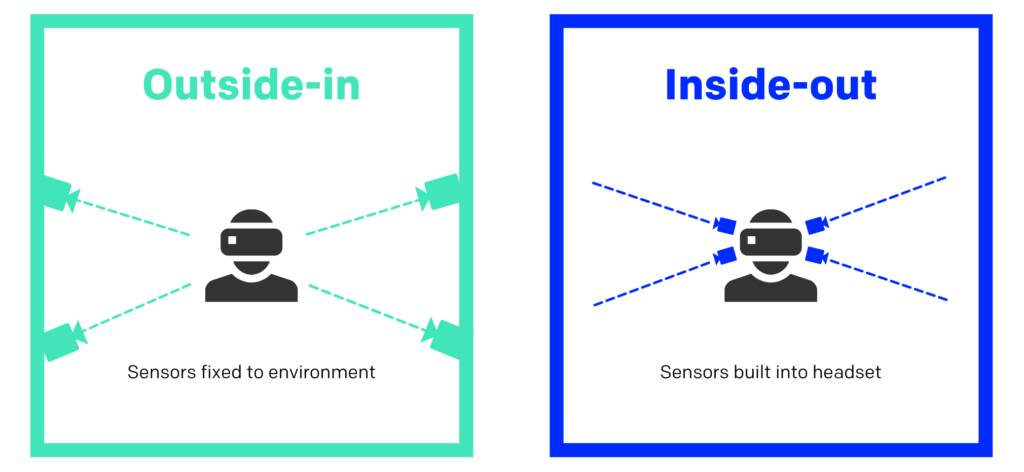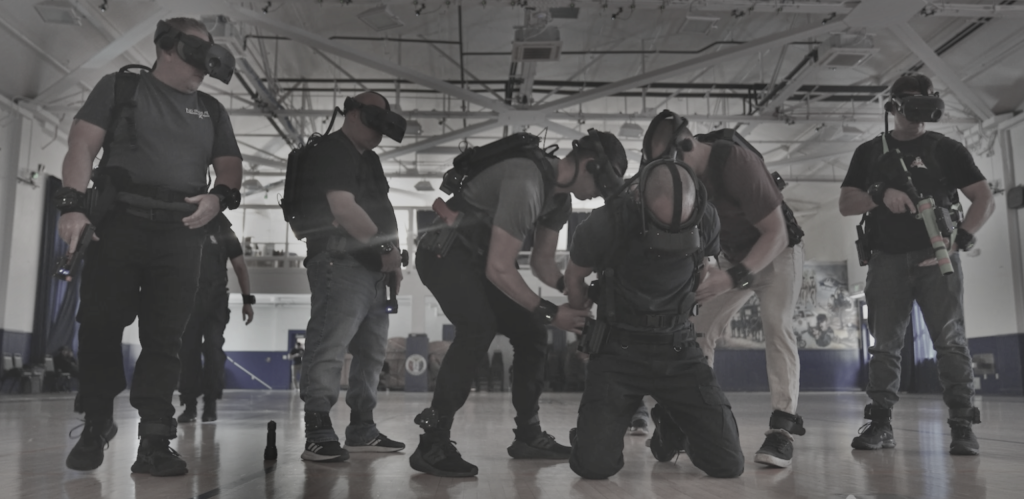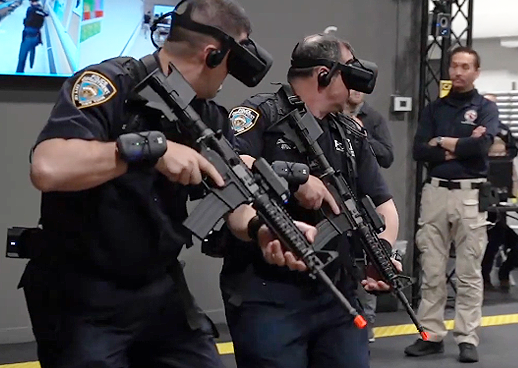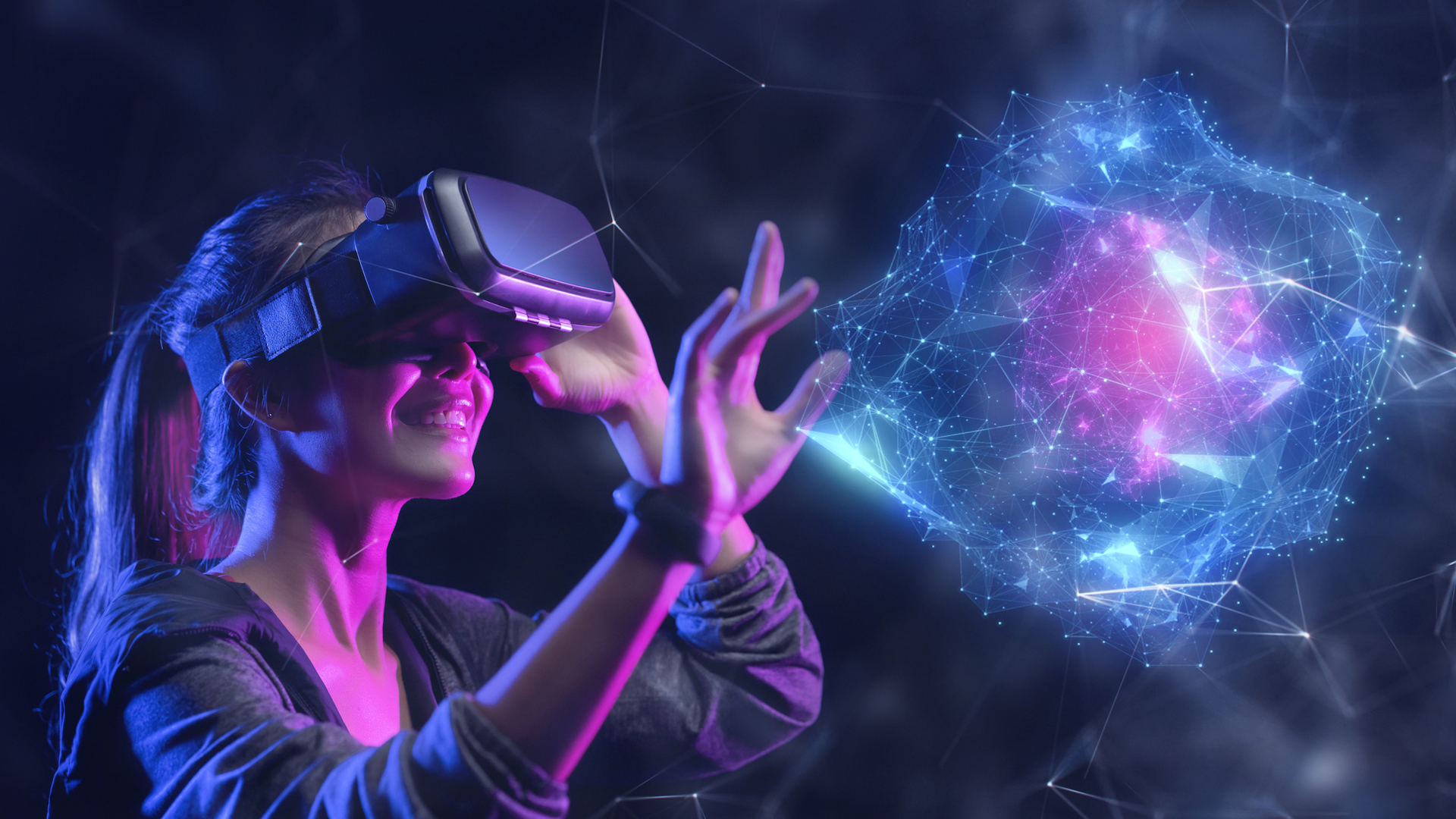The Reality of Inside-Out vs Outside-In Tracking.

Recreating the human body in virtual reality is no easy feat. Only recently have VR headsets and computers become powerful and fast enough to fool the human brain into thinking the visuals inside a head mounted display are a convincing version of reality as they turn their head and begin to experience a simulated world.
And that’s just the beginning. Allowing a VR user to physically move their whole body in real life and have their limbs, or even accessories they hold, reproduced faithfully in virtual reality is an even greater task – with the final refinement of this concept being an experience so high-fidelity, a true 1:1 synergy exists between what the participant’s body does in real life and what their avatar does in the virtual space down to a sub-millimeter level. The latter level of precision is required for a variety of training applications – specifically for multi-person, multi-prop scenarios like those required of law enforcement and firearms training in VR.

There are two methods available today to recreate a participant’s physical movement in virtual reality: inside-out tracking and outside-in tracking. Most commercial VR headsets on the market today offer some level of inside-out tracking. This is done by using outward-facing cameras mounted within the headset that attempt to map its physical position along with any visible peripherals (like controllers) within the surrounding environment. The benefit of inside-out tracking is the lack of any external equipment needed to measure the movement of the participants and accessories. However, this comes at a cost to positional accuracy. For instance, a participant walking in a circle in VR may start and stop in the same virtual position, but their physical path may have drifted from the starting point. Also, the ability to track multiple participants and several accessories in the same virtual space is quite limited with inside-out tracking.
The level of positional accuracy with inside-out tracking peripherals is also quite relative. Measuring a pistol’s ballistic trajectory, for example, with inside-out tracking is very relative, which can have a detrimental impact on a user’s muscle memory from how they have practiced aiming their weapon in the real world.
With outside-in tracking, all of the detriments of inside-out tracking are accounted for. Outside-in uses cameras (either optical or infrared) that surround the perimeter of the training space and point inward to the subjects being tracked. Once calibrated, these cameras measure all the movement and position of users and peripherals within the space down to a sub-millimeter level of accuracy. This eliminates any sort of relative drift or negative muscle memory that inevitably plagues inside-out tracking. Thus, outside-in tracking is purpose built for professional training that requires consistency and accuracy of movement.

The added benefit to outside-in tracking is the ability to measure multiple people and peripherals in VR at once. Because the headsets and peripherals are not measuring themselves in space, the tracking system does all the heavy lifting along with the participant computers in creating an extremely fluid and consistent VR experience for multiple users (10 or more in many cases), which creates an even deeper level of immersion and memorable learning for the trainees.
Inside-out tracking does currently have one key benefit in VR positioning compared to outside-in, and that’s regarding hand and finger tracking. Many professional VR headsets nowadays accurately track and represent a user’s finger movements in virtual environments, which provides a significant increase in immersion and even communication (pointing, gesturing, etc.) for the participants. So, the best VR training simulators will likely leverage a combination of both inside-out and outside-in body tracking.
Of course, the current outside-in body tracking systems for VR do require more external equipment and setup time than purely inside-out systems. However, this time and equipment investment is shrinking, and newer tech on the horizon – such as markerless body tracking – will reduce complexity even further in the future.
Inside-out tracking for gaming and commercial applications certainly has its place. Where “good enough” is more than enough, and relative measurement is acceptable, inside-out tracking can do a fantastic job in creating an immersive experience for a VR user. But although VR gaming technology has its place, professional applications for virtual reality simulators can quite literally be a matter of life and death in getting the training concepts to seamlessly translate to real world behavior. In that way, there is no room for shortcuts in high-quality, high stakes VR training.

Have questions about what virtual training solution is best for your team? Reach out to the V-Armed team to set up a call or a demonstration.



